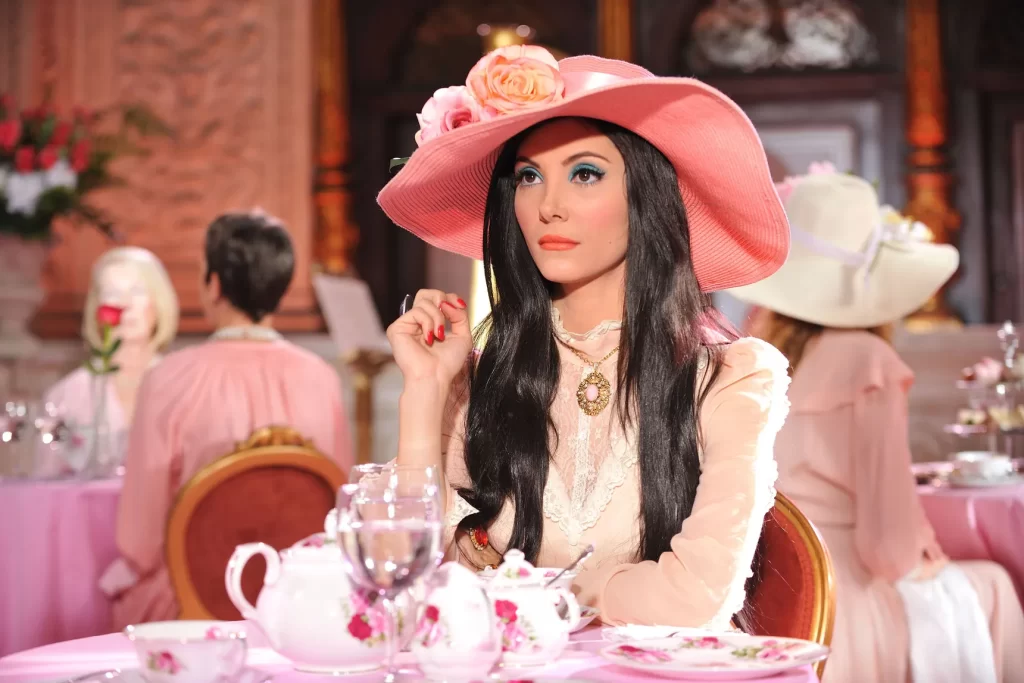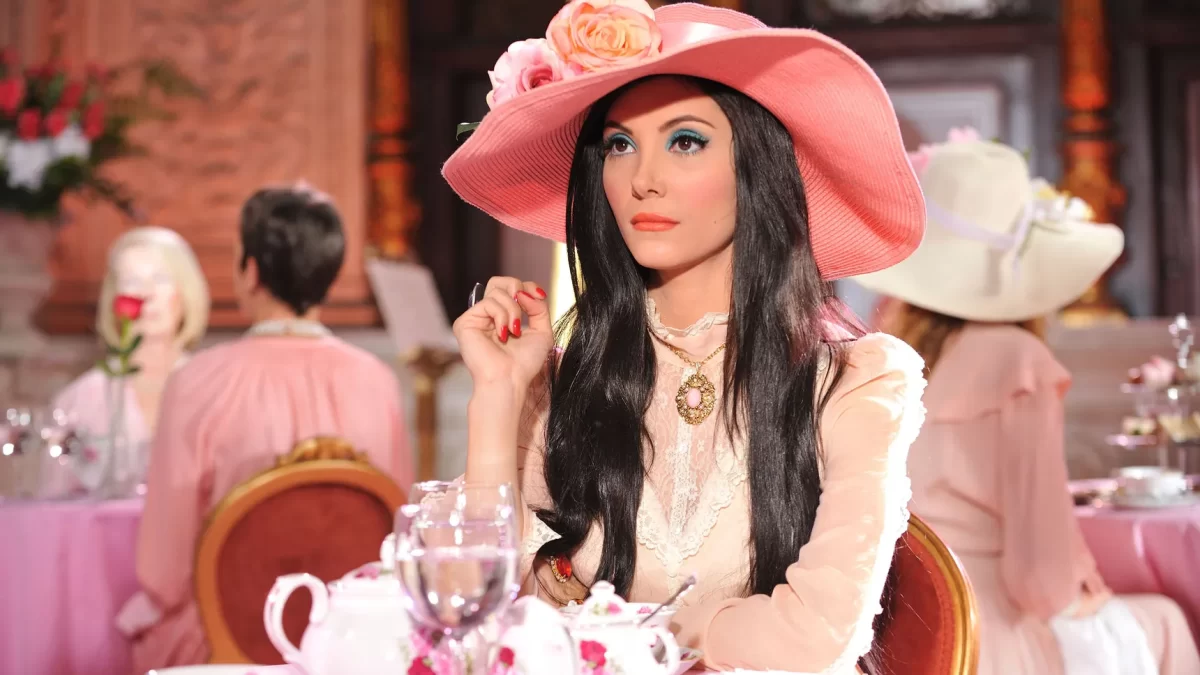
The Love Witch is an immensely stylized film filled with color and fantasy, written, directed, edited, produced, and scored, all by Anna Biller. The film follows beautiful, self-proclaimed “love witch,” Elaine (Samantha Robinson), determined to start anew and leave her dark past behind her. She arrives at her new home—a rented room in a gothic, victorian-style building, owned by an old friend of hers. The room is kept up by a woman named Trish (Laura Waddell) who Elaine meets upon arrival. Elaine’s room has been diligently decorated with Wiccan decor, stocked with herbs, candles, and artwork.
Trish befriends Elaine, though their views on men, sex, and relationships are very different from one another. Elaine tells Trish that what she’s really interested in is love. “You might say I’m addicted to love,” she says, pleasantly. Elaine believes that the only way to get a man to love you is by giving him sex—giving him his “fantasy.” Viewers are shocked by this patriarchal nonsense, as is Trish. Trish is adamant that her own husband loves her, regardless of whether she gives him sex. Elaine doesn’t seem convinced, and her confidence in her opinion makes us wonder.
Elaine goes about her days looking for love, finding love, losing love, and looking for love again. The ripples she makes with her lusty heart bring trouble to many along the way, and the damage is enough to get the local police involved and searching for a culprit.
The film is classified as a comedy horror/tragedy, and its time period is decidedly fictional, due to the jarring mix of 2016 and late 1960’s. For example, Elaine dresses exclusively in upper class, 60’s-style garb, drives an old car, and clearly has very outdated ideas about love, womanhood, and matrimony. But some of the other characters are seen wearing casual, modern attire, driving new cars, and even using cell phones.
The Love Witch contains so much aesthetic eye candy, that viewers almost forget how purposefully distasteful the sentiment of the film is. Elaine is your classic femme fatale, but her frantic desperation, throughout the film, to gain the love of a man seems to diminish a bit of her power. She performs magic spells and rituals—alone in her room as well as out with other witches. Elaine seduces multiple men over the course of the film, and harm comes to each of them for different reasons. When a potential new lover piques her interest, the score and cinematography imply hypnotism; as Elaine meets a man’s gaze, the camera zooms in on her eyes (and iconographic eyeshadow), and suspenseful music accentuates the feeling of a curse. He is instantly at her disposal.
The first (and most graphic) seduction scene of the film is complete with rainbow lens flares for the visual representation of hallucinogenic herbs at play. The colors in The Love Witch suggest an alternate reality. Nothing is downplayed—there exists no minimalism. Anna Biller’s style of filmmaking is nothing if not fearless; she seems to have made the film entirely for herself, uninterested in whether viewers would disagree with her choices.
The dialogue throughout the film is slow and syrupy, with intentional, campy melodrama. The conversations between characters seem as cooperative and speaker-centric as if they are taking place onstage in a play. In a 2017 interview, Anna Biller states, “…The style that a lot of people attribute to b-movies and melodramas is just classical, theatrical acting (as opposed to contemporary mumble-y movie acting), and all of my actors were classically trained. So they have strong voices, they speak clearly and enunciate…” Biller also adds that she didn’t expect the acting/speaking style in her film to be humorous to viewers. The way in which the characters speak to one another makes it clear that they aren’t trying to hide the fact that they’re simply acting in a fictional world. There is no place for subtlety in The Love Witch, and that is what makes the film unique.
The Love Witch—95% on Rotten Tomatoes. Watch now on Amazon Prime!













